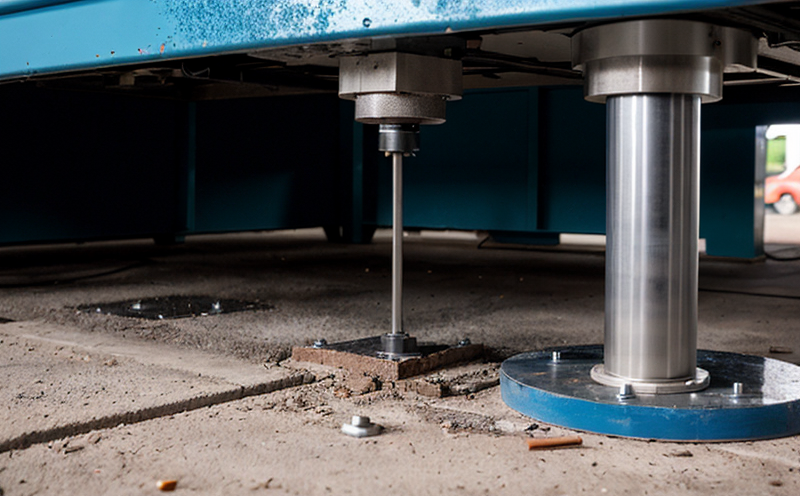ISO 16810 Ultrasonic Residual Stress Testing
The ISO 16810 standard is widely recognized in the additive manufacturing and 3D printing sectors due to its comprehensive approach to residual stress testing. This method leverages ultrasonic waves to measure internal stresses within materials, ensuring that parts meet stringent quality standards before they are used in critical applications.
Residual stress plays a crucial role in material behavior during processing and service life. Excessive residual stress can lead to deformation, cracking, or failure of components. Therefore, accurate measurement and control of these stresses are essential for the success of additive manufacturing processes. ISO 16810 provides a standardized procedure that guarantees consistent and reliable results across various materials and part geometries.
The testing process involves transmitting ultrasonic waves through the material being tested. These waves interact with internal defects or stress gradients, producing echoes that are captured by sensors. By analyzing these echoes, technicians can determine the magnitude and distribution of residual stresses within the component. This non-destructive technique allows for precise evaluation without altering the integrity of the part.
Compliance with ISO 16810 ensures that additive manufacturing processes adhere to international quality standards, enhancing product reliability and safety. For industries like aerospace, automotive, and medical devices, where precision and durability are paramount, this service is indispensable.
The ultrasonic method employed by ISO 16810 offers several advantages over other residual stress measurement techniques:
- Non-destructive: The technique does not alter the physical properties of the material.
- Precision: It provides accurate measurements that are repeatable and reliable.
- Speed: Testing can be completed quickly, allowing for efficient quality control processes.
- Versatility: Suitable for a wide range of materials including metals, polymers, and composites.
To prepare specimens for ISO 16810 testing, technicians ensure that the parts are in their final geometry and have undergone all necessary post-processing steps. This includes heat treatment, surface finishing, and other treatments that may affect residual stress levels. Once prepared, the specimens are mounted on an ultrasonic transducer array. The process involves scanning the entire cross-section of the part to capture a comprehensive dataset.
The test results from ISO 16810 provide valuable insights into the internal state of the material. These data can be used to optimize manufacturing processes, ensuring that parts are free from harmful residual stresses. Additionally, the information gathered during testing can inform design decisions and material selection for future projects. This not only improves product quality but also reduces costs associated with rework or failures.
By adhering to ISO 16810 standards, manufacturers can demonstrate compliance with international regulations and gain competitive advantages in terms of reputation and trustworthiness. This is particularly important in sectors where safety is a critical factor, such as aviation and healthcare. The use of this standard also facilitates better communication between suppliers and customers, ensuring that everyone involved understands the quality expectations.
In conclusion, ISO 16810 ultrasonic residual stress testing is an essential service for industries reliant on additive manufacturing and 3D printing technologies. Its ability to provide accurate, reliable, and non-destructive measurements makes it a cornerstone of modern quality assurance practices in these sectors.
Industry Applications
- Aerospace: Ensuring the integrity and safety of components used in aircraft engines and structures.
- Automotive: Verifying the reliability of engine parts, exhaust systems, and other critical assemblies.
- Medical Devices: Guaranteeing the quality and performance of implants, surgical instruments, and other medical tools.
- Defense: Testing parts for military equipment to ensure durability under extreme conditions.
- Bioengineering: Evaluating materials used in bioprinting for tissue engineering applications.
In each of these industries, the precision of ISO 16810 testing is crucial. The ability to detect even small variations in residual stress can have significant implications for product performance and safety.
Eurolab Advantages
At Eurolab, we are committed to providing the highest level of service excellence in ISO 16810 ultrasonic residual stress testing. Our team of experts ensures that every test is conducted meticulously and accurately, leveraging advanced technology to deliver reliable results.
- Expertise: Our staff includes highly skilled professionals with extensive experience in additive manufacturing processes and quality assurance protocols.
- Technology: We utilize state-of-the-art ultrasonic testing equipment that guarantees precise measurements.
- Compliance: All our procedures adhere strictly to ISO 16810 standards, ensuring consistent results across all tests.
- Support: Our dedicated support team is available to answer any questions and provide guidance throughout the testing process.
We pride ourselves on delivering accurate, reliable, and timely test reports that meet or exceed customer expectations. With Eurolab, you can be confident in the quality of our services and the integrity of your additive manufacturing processes.





